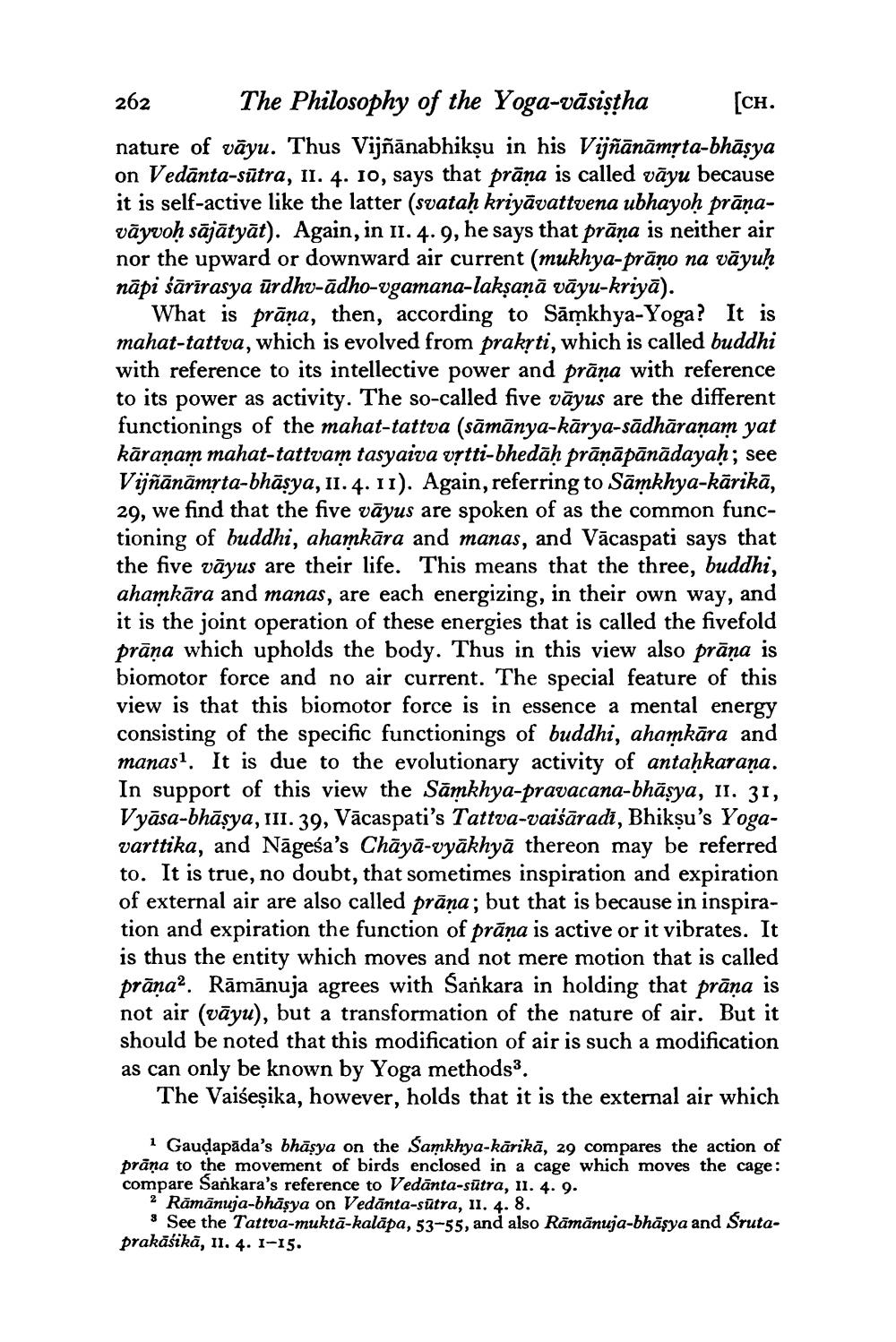________________
262 The Philosophy of the Yoga-vāsistha (CH. nature of vāyu. Thus Vijñānabhikṣu in his Vijñānāmsta-bhāşya on Vedānta-sūtra, II. 4. 10, says that prāna is called vāyu because it is self-active like the latter (svataḥ kriyāvattvena ubhayoḥ prāņavāyvoḥ sājātyāt). Again, in 11. 4.9, he says that prāņa is neither air nor the upward or downward air current (mukhya-prāņo na vāyuh nāpi śārīrasya ürdhv-ādho-vgamana-lakṣaṇā vāyu-kriyā).
What is prāna, then, according to Sāmkhya-Yoga? It is mahat-tattva, which is evolved from prakyti, which is called buddhi with reference to its intellective power and prāna with reference to its power as activity. The so-called five vāyus are the different functionings of the mahat-tattva (sāmānya-kārya-sādhāranam yat kāraṇam mahat-tattvam tasyaiva vrtti-bhedāḥ prāṇāpānādayaḥ; see Vijñānāmsta-bhāsya, 11.4. 11). Again, referring to Sāmkhya-kārikā, 29, we find that the five vāyus are spoken of as the common functioning of buddhi, ahamkāra and manas, and Vācaspati says that the five vāyus are their life. This means that the three, buddhi, ahamkāra and manas, are each energizing, in their own way, and it is the joint operation of these energies that is called the fivefold prāṇa which upholds the body. Thus in this view also prāņa is biomotor force and no air current. The special feature of this view is that this biomotor force is in essence a mental energy consisting of the specific functionings of buddhi, ahamkāra and manast. It is due to the evolutionary activity of antaḥkaraņa. In support of this view the Sāmkhya-pravacana-bhāșya, 11. 31, Vyāsa-bhāsya, III. 39, Vācaspati's Tattva-vaiśāradi, Bhiksu's Yogavarttika, and Nāgeśa's Chāyā-vyākhyā thereon may be referred to. It is true, no doubt, that sometimes inspiration and expiration of external air are also called prāņa; but that is because in inspiration and expiration the function of prāņa is active or it vibrates. It is thus the entity which moves and not mere motion that is called prāna”. Rāmānuja agrees with Sankara in holding that prāna is not air (vāyu), but a transformation of the nature of air. But it should be noted that this modification of air is such a modification as can only be known by Yoga methods3.
The Vaiseșika, however, holds that it is the external air which
i Gaudapāda's bhāsya on the Samkhya-kārikā, 29 compares the action of prāņa to the movement of birds enclosed in a cage which moves the cage: compare Sankara's reference to Vedānta-sūtra, II. 4. 9.
2 Rāmānuja-bhāsya on Vedānta-sūtra, 11. 4. 8.
* See the Tattva-muktā-kalāpa, 53-55, and also Rāmānuja-bhāsya and Srutaprakāśikā, 11. 4. 1-15.




